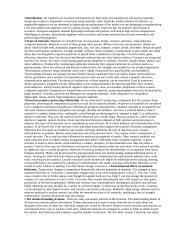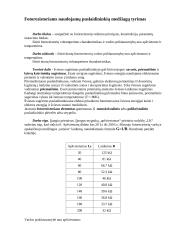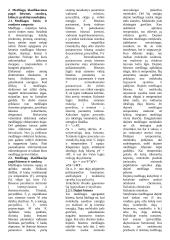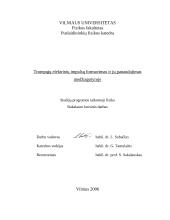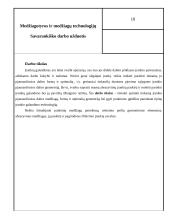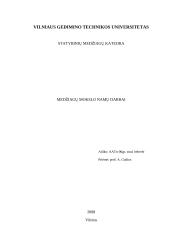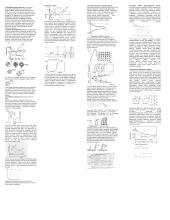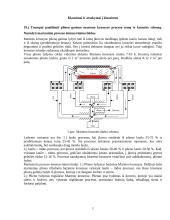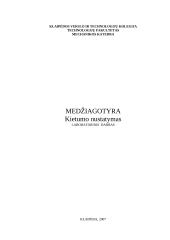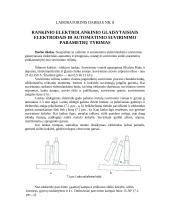Konspektai
Material science theory
There are several groups of materials: metals, ceramics, polymers, semiconductors and composite materials. Materials in each of these groups often possess different structures and properties.
Metals (alloys). A group of materials having the general characteristics of good ductility, strength, and electrical conductivity. Steel, aluminum, zinc, etc.
Ceramics. A group of materials characterized by good strength and high melting temperatures, but poor ductility and electrical conductivity. Ceramic raw materials are typically compounds of metallic and nonmetallic elements. Brick, glass.
Polymers. A group of materials normally obtained by joining organic molecules into giant molecular chains or networks. Rubber, plastic.
Semiconductors. A group of materials having intermediate electrical conductivity and other unusual physical properties. Silicon.
Composites. A group of materials formed from combination of metals, ceramics or polymers in such a manner that unusual combinations of properties are obtained. Carbon-fiber-reinforced polymers.
3. Structure-property-processing relationship.
To produce a component that has the proper shape and properties, engineers meets requirement by taking advantage of a complex three-part relationship between the internal structure of the material, the processing of the material and the final properties of the material.
Properties. We can consider the properties of a material in two categories – mechanical and physical. Mechanical properties describe how a material responds to an applied force (strength, ductility, stiffness). Physical – electrical, magnetic, optical, thermal, elastic and chemical behavior, depend on both structure and processing of a material.
Structure. The structure of a material can be considered on several levels, all of which influence the final behavior of the product. First level – the arrangement of individual atoms that compose the material, it affects on the physical properties of the material. Second level, the arrangement of the atoms in space is considered. In most materials, more than one phase is present, with each phase having its unique atomic arrangement and properties.
Processing. Material processing produces the desired...
Šį darbą sudaro 11884 žodžiai, tikrai rasi tai, ko ieškai!
★ Klientai rekomenduoja
Šį rašto darbą rekomenduoja mūsų klientai. Ką tai reiškia?
Mūsų svetainėje pateikiama dešimtys tūkstančių skirtingų rašto darbų, kuriuos įkėlė daugybė moksleivių ir studentų su skirtingais gabumais. Būtent šis rašto darbas yra patikrintas specialistų ir rekomenduojamas kitų klientų, kurie po atsisiuntimo įvertino šį mokslo darbą teigiamai. Todėl galite būti tikri, kad šis pasirinkimas geriausias!
Norint atsisiųsti šį darbą spausk ☞ Peržiūrėti darbą mygtuką!
- Medžiagotyros konspektas
- 5 psl., (11884 ž.)
- Word failas 129 KB
- Lygis: Universitetinis
Mūsų mokslo darbų bazėje yra daugybė įvairių mokslo darbų, todėl tikrai atrasi sau tinkamą!
Panašūs darbai
Kiti darbai
Privalumai
Atsisiuntei rašto darbą ir neradai jame reikalingos informacijos? Pakeisime jį kitu nemokamai.
Pirkdamas daugiau nei vieną darbą, nuo sekančių darbų gausi 25% nuolaidą.
Išsirink norimus rašto darbus ir gauk juos akimirksniu po sėkmingo apmokėjimo!
Atsiliepimai













